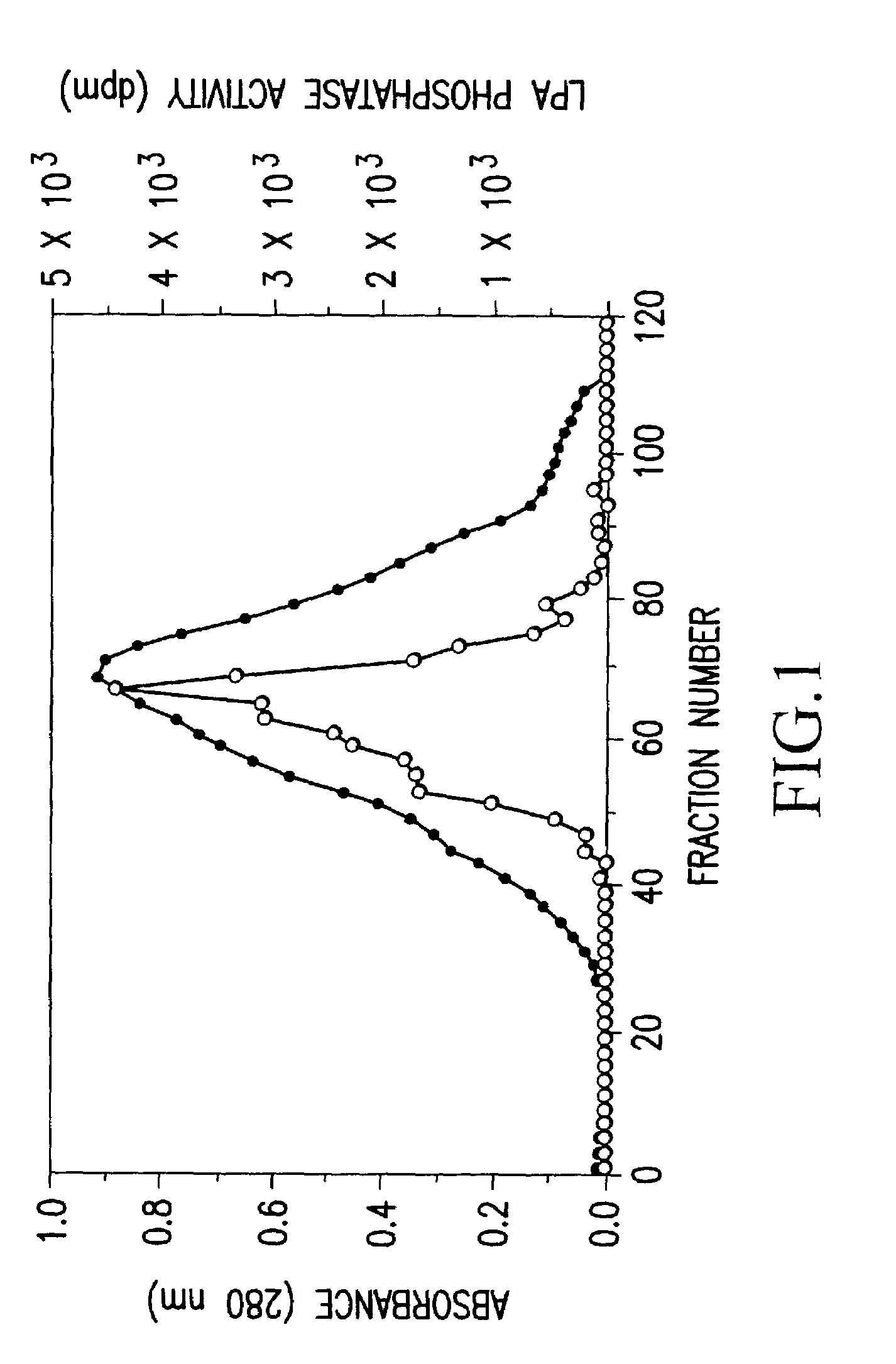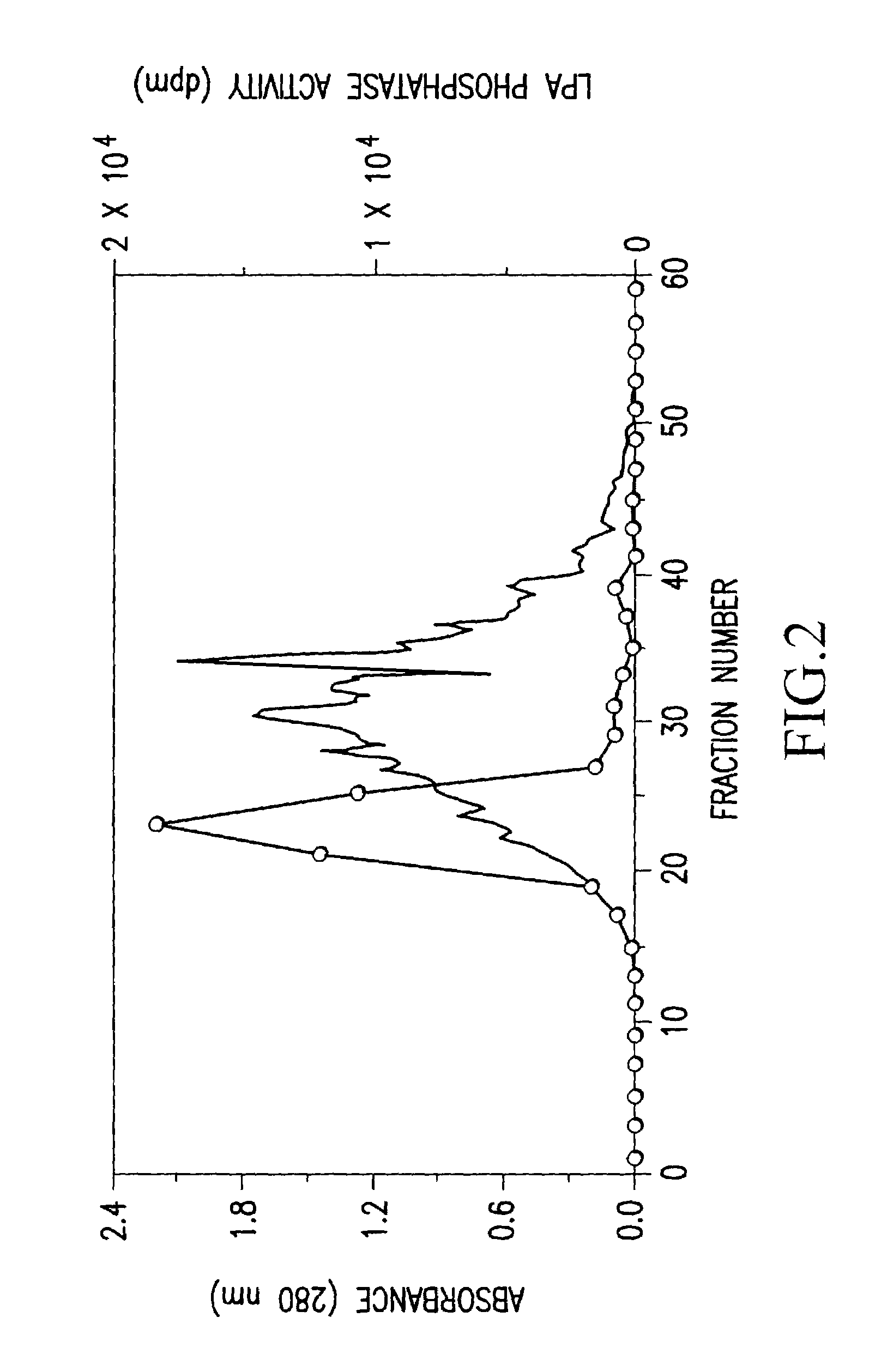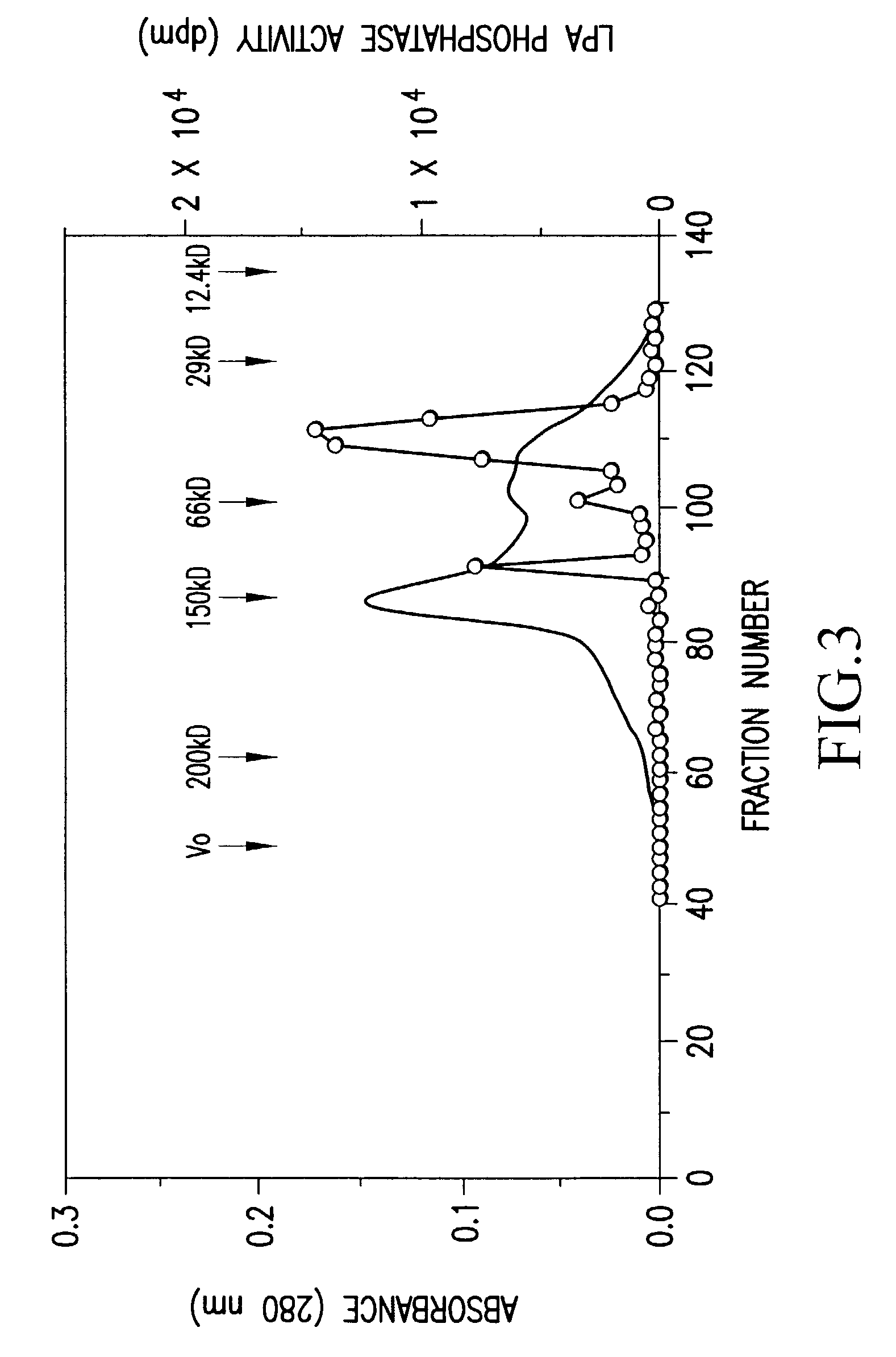Recombinant lysophosphatidic acid phosphatase
a lysophosphatidic acid and phosphatase technology, applied in the field of lysophosphatidic acid phosphatase, can solve the problems of complicated procedures, long time period, and not yet known lpa-specific phosphatase, and achieve the effect of simple and inexpensive determination of lpa
- Summary
- Abstract
- Description
- Claims
- Application Information
AI Technical Summary
Benefits of technology
Problems solved by technology
Method used
Image
Examples
preparation example 1
Purification of Bovine LPA Phosphatase
[0099]All of the following steps were carried out at 0° to 4° C.
(1) Homogenization Step
[0100]Buffer [20 mM Tris-HCl (pH 7.5), 1 mM EDTA, 0.1 mM phenylmethyl sulfonyl fluoride, 1 mg / ml aprotinin, 1 mg / ml leupeptin] was added to bovine brain (1600 g), so as to have a concentration of 1.5 ml / g, and the mixture was homogenized by National mixer MX-V100. The homogenate was centrifuged at 12,000×g for 30 minutes, and the resulting supernatant was further centrifuged at 100,000×g for 1 hour, to give a supernatant cytosol fraction (9,600 mg as an amount of protein).
(2) Ammonium Sulfate Fractionation
[0101]Ammonium sulfate was added to the above cytosol fraction so as to give a 35% saturated solution, and the mixture was stirred at 4° C. for 1 hour, and thereafter centrifuged (12,000×g for 30 minutes). Ammonium sulfate was further added to the resulting supernatant so as to give a 45% saturated solution, and thereafter similar procedures were carried out....
example 1
Determination of Partial Amino Acid Sequence of Bovine LPA Phosphatase
[0119]The bovine LPA phosphatase (20 μg) obtained in Preparation Example 1 was subjected to 7.5% SDS-PAGE, and transferred to a PVDF membrane (manufactured by ATTO) by using TRANS-BLOT SD SEMI-DRY TRANSFER CELL (manufactured by Bio-Rad). The membrane was stained with pigment (Ponceau®, manufactured by Tokyo Kasei), and a desired band was cut out. Thereafter, a protein was cleaved with lysylendopeptidase, and extracted with acetonitrile. This extract was fractionated with HPLC C18 column, and 6 peaks were analyzed by Edman degradation method using a peptide sequencer (PPSQ-10 Protein Sequencer, manufactured by SHIMADZU).
[0120]As a result, it was found that the above six peptides had the following sequences:
[0121]
peak 1:MVQVVFRHGARSPL (SEQ ID NO: 3);peak 2:FLNTISVYTLSPEK (SEQ ID NO: 4);peak 3:EGPIVISTDEAK (SEQ ID NO: 5);peak 4:EWFVQLYYRGK (SEQ ID NO: 6);peak 5:VGMEQMFALGERLRI (SEQ ID NO: 7); andpeak 6:SQLLEVPPQTQLEY...
example 2
Expression of Human LPA Phosphatase in E. coli
[0135]The human LPA phosphatase obtained in Example 1 comprises a signal peptide at N-terminal. When the protein was expressed in E. coli, there is a possibility that the signal peptide is cleaved. When a protein resulting from fusion of N-terminal of the human LPA phosphatase with other proteins is expressed in E. coli and purified, there are deduced the difficulty of purification caused by cleavage of the signal peptide and the lowering of the phosphatase activity. Therefore, in this example, a construct carrying a sequence encoding a signal peptide and a construct without such a sequence were prepared.
[0136]PCR was carried out with LPA phosphatase cDNA cloned into pBluescript® II SK(−) obtained by the secondary screening of Example 1 as a template, by using the following primers:
[0137]
(1) without signal peptideforward:(SEQ ID No:11)5′-(cgcggatcc)ctgaagttgaaaatggtgcag-3′reverse:(SEQ ID NO:12)5′-(cgcggatcc)ag-ttactcttcatttccaacttc-3′(2...
PUM
 Login to View More
Login to View More Abstract
Description
Claims
Application Information
 Login to View More
Login to View More - R&D
- Intellectual Property
- Life Sciences
- Materials
- Tech Scout
- Unparalleled Data Quality
- Higher Quality Content
- 60% Fewer Hallucinations
Browse by: Latest US Patents, China's latest patents, Technical Efficacy Thesaurus, Application Domain, Technology Topic, Popular Technical Reports.
© 2025 PatSnap. All rights reserved.Legal|Privacy policy|Modern Slavery Act Transparency Statement|Sitemap|About US| Contact US: help@patsnap.com



